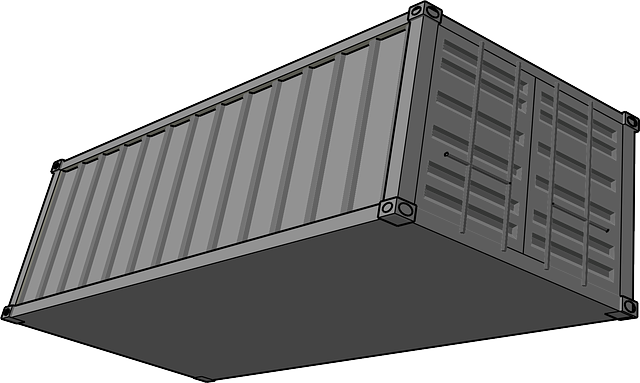SR22 regulations enhance aircraft safety but pose financial challenges for smaller aviation operations due to complex and costly tailored coverage demands. Tailored SR22 Coverage offers a specialized solution, customizing policies based on flight hours, pilot expertise, and maintenance history for comprehensive protection against accidents, legal issues, property damage, and liability. Airlines must implement strategic partnerships with insurance providers, optimize fleet management, enhance crew training, and conduct thorough risk assessments to maintain operational and financial stability while managing SR22 aircraft risks effectively.
In today’s aviation landscape, ensuring operational and financial stability is paramount, especially with high-risk aircraft like the SR22. This article guides you through a comprehensive approach to mitigate risks associated with this powerful machine. We explore ‘Understanding SR22: Its Role and Potential Risks’ and delve into tailored SR22 coverage as a crucial strategy. Additionally, we uncover operational strategies and financial management techniques to enhance stability. By combining these tactics, aviation operators can navigate the challenges of SR22 ownership with confidence.
Understanding SR22: Its Role and Potential Risks

SR22, or Standard 22, is a set of regulations designed to ensure the safety and stability of aircraft within the aviation industry. Its primary role is to establish minimum standards for aircraft design, manufacturing, and maintenance, thereby enhancing overall operational safety. However, while SR22 brings numerous benefits, it also presents potential risks that must be carefully managed.
One key risk lies in the complexity of adhering to these regulations, especially for smaller aviation operations. The requirement for tailored SR22 coverage ensures that each aircraft meets specific standards, which can be resource-intensive and costly. This is particularly challenging for budget-constrained airlines or private owners, as it demands a significant investment in training, equipment, and documentation to maintain operational stability and financial viability.
Tailored Coverage: Customizing Insurance Policies for SR22

In the aviation industry, Tailored SR22 Coverage stands as a strategic approach to insurance, specifically designed for the unique needs of small recreational aircraft like the Cirrus SR22. This method involves customizing insurance policies to address the specific risks associated with these aircraft. By analyzing factors such as flight hours, pilot experience, and maintenance records, insurers can create comprehensive coverage that goes beyond standard offerings. Such customization ensures that owners receive protection tailored to their operational and financial stability, mitigating potential risks in a way that aligns with individual circumstances.
This personalized approach is particularly beneficial for SR22 owners who fly both recreationally and for business purposes. It accounts for varying flight scenarios, from routine domestic flights to cross-border adventures, each presenting distinct challenges. Tailored coverage not only protects against accidents but also includes provisions for legal expenses, property damage, and liability, offering peace of mind in an industry where every flight is a step towards maintaining financial stability.
Operational Strategies to Mitigate Financial Instability

To reduce the impact of SR22 on operational and financial stability, airlines must employ robust operational strategies that complement tailored SR22 coverage. This involves optimizing fleet management to minimize ground times and maximize utilization, ensuring regular maintenance schedules to prevent costly unexpected repairs, and enhancing crew training to improve safety and efficiency. By implementing these measures, airlines can significantly reduce operational risks associated with SR22 aircraft.
Additionally, strategic partnerships and risk-sharing agreements with insurance providers can help alleviate financial instability. Collaborating with specialized aviation insurers allows for the creation of customized coverage plans that address specific SR22-related hazards. These partnerships not only offer more affordable rates but also provide access to advanced risk management tools and support during adverse events, ultimately bolstering the financial stability of both carriers and their insurance partners.
Financial Management: Stabilizing Through Risk Assessment and Planning

Effective financial management is pivotal in maintaining operational stability, especially within the aviation industry where risks are multifaceted and significant. For operators managing SR22 aircraft, a strategic approach to financial planning can ensure resilience against potential pitfalls. This involves a comprehensive risk assessment that identifies unique challenges associated with this specific aircraft type, such as maintenance costs, liability exposure, and market fluctuations in aviation insurance rates.
Tailored SR22 coverage, designed through meticulous risk analysis, plays a crucial role in stabilizing financial performance. By assessing and mitigating these risks proactively, operators can secure competitive insurance policies that align with their operational needs. This proactive financial management not only safeguards against unforeseen events but also demonstrates a forward-thinking approach, contributing to the overall stability of both operations and finances.
By understanding the unique risks associated with SR22 aircraft and implementing strategic solutions, operators can achieve operational and financial stability. Tailored SR22 coverage, combining customized insurance policies and proactive risk management, is essential to navigate potential challenges. Adopting efficient operational strategies and adopting robust financial management practices ensure a resilient and sustainable future for SR22 flights. These measures are key to maximizing the benefits of SR22s while minimizing their impact on overall stability.
